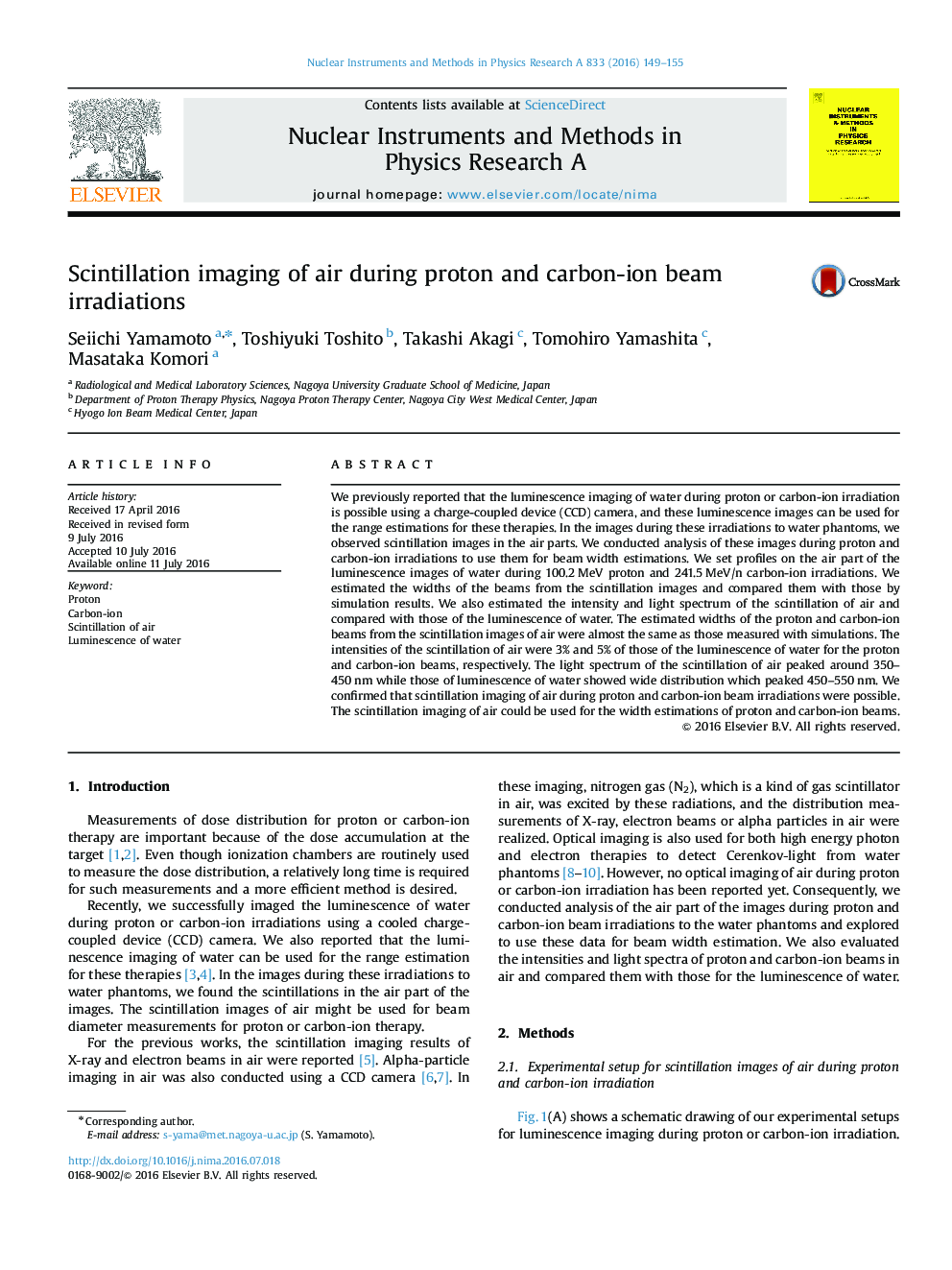| Article ID | Journal | Published Year | Pages | File Type |
|---|---|---|---|---|
| 8168444 | Nuclear Instruments and Methods in Physics Research Section A: Accelerators, Spectrometers, Detectors and Associated Equipment | 2016 | 7 Pages |
Abstract
We previously reported that the luminescence imaging of water during proton or carbon-ion irradiation is possible using a charge-coupled device (CCD) camera, and these luminescence images can be used for the range estimations for these therapies. In the images during these irradiations to water phantoms, we observed scintillation images in the air parts. We conducted analysis of these images during proton and carbon-ion irradiations to use them for beam width estimations. We set profiles on the air part of the luminescence images of water during 100.2Â MeV proton and 241.5Â MeV/n carbon-ion irradiations. We estimated the widths of the beams from the scintillation images and compared them with those by simulation results. We also estimated the intensity and light spectrum of the scintillation of air and compared with those of the luminescence of water. The estimated widths of the proton and carbon-ion beams from the scintillation images of air were almost the same as those measured with simulations. The intensities of the scintillation of air were 3% and 5% of those of the luminescence of water for the proton and carbon-ion beams, respectively. The light spectrum of the scintillation of air peaked around 350-450Â nm while those of luminescence of water showed wide distribution which peaked 450-550Â nm. We confirmed that scintillation imaging of air during proton and carbon-ion beam irradiations were possible. The scintillation imaging of air could be used for the width estimations of proton and carbon-ion beams.
Keywords
Related Topics
Physical Sciences and Engineering
Physics and Astronomy
Instrumentation
Authors
Seiichi Yamamoto, Toshiyuki Toshito, Takashi Akagi, Tomohiro Yamashita, Masataka Komori,
